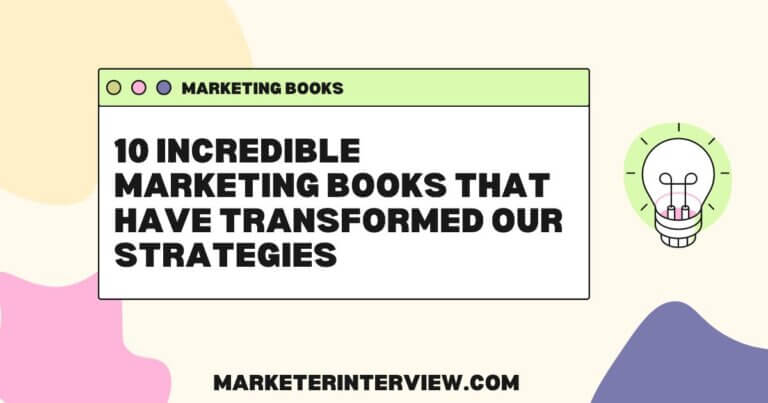17 SEO Software for Analyzing Keyword Trends Over Time
Navigating the dynamic world of SEO demands cutting-edge tools and informed strategies. This article unpacks the power of top SEO software, offering expert insights for those looking to master keyword trend analysis. Dive deep into the methodologies and real-world applications that can elevate a business’s online visibility.
Want to get quoted in MarketerInterview.com content just like this? Apply to become a contributor today!
Contents
- 1 Rely on Google Trends for Keyword Analysis
- 2 Use Ahrefs and Glimpse for Trends
- 3 Google Search Console and Ahrefs for Trends
- 4 Analyze Keyword Trends with Glimpse
- 5 Track Trends with SEMrush and Google Trends
- 6 Gain Insights with Google Search Console
- 7 Affordable Keyword Analysis with Ubersuggest
- 8 Track Trends with Moz Keyword Explorer
- 9 Comprehensive Analysis with Semrush
- 10 Track Keywords Over Time with SE Ranking
- 11 Analyze Trends with Writesonic
- 12 Cross-Check Data with Multiple Sources
- 13 Ahrefs for Reliable Keyword Tracking
- 14 Track Trends with SE Ranking
- 15 Combine Tools for Comprehensive Insights
- 16 Analyze Trends with SEObility
- 17 Daily Keyword Reports with SERanking
Rely on Google Trends for Keyword Analysis
We rely heavily on Google Trends to analyze keyword trends over time. It’s a free and powerful tool that helps us understand how search interest for specific keywords has evolved, both regionally and globally. This insight is invaluable for spotting rising trends, seasonal fluctuations, and long-term shifts in search behavior.
What makes Google Trends our go-to tool is its simplicity and depth. Unlike other keyword research tools, it shows real-time data and provides a clear picture of interest over time, allowing us to fine-tune our content strategy and target keywords that are gaining momentum.
For example, if we see a significant uptick in searches for a specific term related to one of our clients’ services, we can pivot quickly, optimizing relevant pages or creating new content around the emerging trend. Additionally, Google Trends allows us to compare multiple keywords side by side, so we can prioritize which terms will generate the most traffic over time.
This real-time insight helps us stay ahead of the curve and ensures we’re always focusing on the most relevant keywords for our audience. It’s not just about tracking keyword volume—it’s about understanding shifts in intent and demand.

Chris Raulf, International AI and SEO Expert | Founder & President, Boulder SEO Marketing
Use Ahrefs and Glimpse for Trends
There are a lot of tools in the industry which can be used to analyze trends, the most basic of these is Google Trends data. However, for me, I have two main tools I typically use:
- Ahrefs: Provides keyword tracking and trend analysis on a per keyword level, allowing you to track keyword trends, search volume, and keyword difficulty over time.
- Glimpse: Glimpse is a Google Chrome add-on that provides insights into keyword trends and consumer behavior. It is a great option for understanding broader search trends and competitive dynamics over time. The add-on allows you to overlay specific keyword data YoY over Google Trends data to get a better representation of performance.

Kev Wiles, Fractional SEO Director, Kev Wiles
Google Search Console and Ahrefs for Trends
1. Google Search Console: It’s free and shows how your website’s keywords perform—like impressions, clicks, and ranking positions over time.
2. Ahrefs: You can track keyword rankings, search volume changes, and competition. Great for spotting trends and seeing historical data.
3. SEMrush: Their “Position Tracking” tool lets you monitor keyword rankings over time, and it’s easy to analyze search volume trends.
4. Moz: It shows keyword search trends and tracks your rankings while offering useful insights on search engine changes.
5. Ubersuggest: An affordable option to track search volume trends and keyword performance, great for beginners.
Why I prefer Ahrefs:
- Accurate and Reliable Data: Their keyword database is one of the largest, and their trend tracking tool provides highly reliable historical data.
- Comprehensive SEO Insights: Ahrefs doesn’t just track keywords; it offers insights into backlinks, content analysis, and competitor research, giving you a full picture of your SEO performance.
- Ease of Use: The interface is intuitive, and the reports are clear and actionable.

Nishant Desai, SEO Manager, Link Publishers
Analyze Keyword Trends with Glimpse
I use Glimpse to analyze keyword trends over time because it is easy to use, offers detailed data granularity, and provides insights across all marketing channels. Unlike traditional keyword research tools that focus only on search volume, Glimpse pulls real-time trends from Google Trends and overlays them with historical data, making it easier to spot emerging opportunities before they become highly competitive.
One of the key reasons I prefer Glimpse is its ability to break down keyword trends by location, time period, and even related searches. This helps businesses refine their content strategy based on real-world demand shifts rather than relying solely on static keyword research. For example, I have used Glimpse to identify seasonal spikes in search interest, allowing businesses to create and publish content at the right time to capture more traffic.
Beyond SEO, Glimpse provides insights that apply to all marketing channels, including paid search and social media. By understanding how search trends evolve, businesses can align their broader marketing efforts with what their audience is actively looking for, maximizing visibility and engagement across platforms.

Dan Taylor, Partner, SALT.agency
Track Trends with SEMrush and Google Trends
SEMrush is my favorite tool for tracking keyword trends over time because it offers detailed data and competitor insights.
The Keyword Magic Tool helps me find a wide range of keywords, showing important details like search volume, difficulty level, and competition. This makes it easier to identify rising trends early and adjust my content strategy accordingly.
The Keyword Overview feature also provides a quick look at how keywords are performing, helping me track changes in interest over time.
Along with SEMrush, I use Google Trends to see how keyword popularity fluctuates. It’s great for spotting seasonal patterns and comparing different search terms to improve my strategy.
By using both tools, I can keep up with search trends and ensure my content stays relevant and competitive.

Shankar Subba, Head of SEO, WP Creative
Gain Insights with Google Search Console
A lot of SEOs tend to rely on third party tools’ data for keyword trends.
For me, the greatest tool to gain insights is Google Search Console, especially when using the API to bypass the 1,000 query limit.
You gain insights into longer tail keywords that are far less competitive, but most importantly, you also gain insights into zero search volume queries.
These are queries that return zero search volume in third party tools, where most other SEOs are getting their data from, but you’ll find that these queries actually generate substantial impressions and clicks.
As others are not considering them due to them not being included in third party tools, you’re ahead of the game and targeting keywords that you’re 100% certain people are searching for but other SEOs are ignoring.

Tom Ward, SEO Consultant, TPW Digital
Affordable Keyword Analysis with Ubersuggest
I prefer Ubersuggest because it’s affordable and packed with valuable features like historical search volume trends, which help me track how keywords perform over time. Its user-friendly interface makes it perfect for small business owners or anyone new to SEO, and it also suggests content ideas and SEO opportunities tailored to my keyword research. For niche markets or budget-friendly campaigns, it’s an excellent tool to analyze trends and test strategies without needing a costly subscription.

Naima Ch, Marketing Head and SEO Specialist, Morse Code Translator
Track Trends with Moz Keyword Explorer
There are many SEO tools on the market, but if you are looking for one that is best for tracking keyword trends over time, there are few better for my money than Moz Keyword Explorer. Oftentimes, keyword management tools are either too simplistic in that they do not allow for sophisticated tracking, or way too complex in which you have to be a software engineer to understand.
The beauty of Moz Keyword Explorer is that it allows you to easily track trends through its opportunity score and to act on them through a user-friendly SEO software suite. In addition, it can be optimized to see the keyword trends that your competitors are utilizing as well. It is Moz’s simplicity of use in identifying keyword trends along with its ability to allow you to act on them that in my book makes it the best tool.

Dana Le, Director of Marketing & Sales, 405 Cabinets & Stone
Comprehensive Analysis with Semrush
I prefer Semrush for my keyword research, analysis, and tracking. I find that it is more comprehensive in its offerings than its competitors. I’m able to see a lot of different variations on keywords, potential keywords for pillar strategies, which pages are currently ranking and what their Authority Score is, and, of course, estimated search volume and difficulty. You can see how a keyword has changed over time, particularly for your own brand if you are tracking it in Semrush.

Lauren Walter, Search & Content Director, Online Optimism
Track Keywords Over Time with SE Ranking
SE Ranking—I prefer this tool because it allows us to track a large number of keywords over time. Once keywords are added to a project, you can view rankings for as long as they’ve been tracked. This is great for us because it shows changes in our rankings and whether they correlate with updates to the ranking page. We can also track keyword rankings for up to five competitors, helping us see if a competitor is outperforming us in a specific area so we can adjust our strategy accordingly.

Cristina Esguerra-Loayza, Product Strategy Manager, Paint N Ship
Analyze Trends with Writesonic
Writesonic (SEO AI Agent) offers a powerful combination of comprehensive data and actionable insights, making it an excellent choice for analyzing keyword trends over time. Its ability to provide a holistic view of keyword performance, from search volume to intent, enables SEO professionals to make informed decisions and develop strategies that align with both user needs and market trends.
It saves me hours and hours of time taken for keyword research and competitor analysis.

Murali Krishna, Seo Analyst, Wealwin Technologies
Cross-Check Data with Multiple Sources
We cross-check data from multiple sources. We use Ahrefs, Semrush, and SpyFu (all of which use different methodologies to calculate volume) to get the most reliable picture of search trends. Each tool estimates volumes differently—for example, “best coffee grinder” shows 2,000 monthly searches in Ahrefs but 2,400 in Semrush and 1,600 in SpyFu. These differences matter.
We’ve built FALCON AI to synthesize this data and surface the metrics that actually drive results. Search volume alone misses crucial context like zero-click searches and desktop vs mobile behavior. We look at whether a query can be answered in two sentences (bad for traffic) and analyze SERP features that impact clickthrough rates.
The mainstream tools give you a feeling of being data-driven without providing genuine insight. By combining multiple data sources and layering in SERP analysis, we make decisions based on the full context rather than just chasing high-volume keywords. This nuanced approach helps our content thrive as search evolves.

Alex Denning, Managing Director, Ellipsis
Ahrefs for Reliable Keyword Tracking
I have tried plenty of SEO tools over the years, but I keep coming back to Ahrefs. It’s just become our team’s go-to tool for watching how keywords move up and down. Every month, we sit down with clients and show them exactly how their important search terms are performing—whether they’re climbing up Google’s rankings or sliding down.
We also thoroughly tested Semrush. What’s interesting about Semrush is that it feels less overwhelming, especially for those who are just starting out with SEO. The screens immediately make more sense, and you’re not overwhelmed by the abundance of data.
But here’s why I stick with Ahrefs: it just gets results. When our team spots something in the data and makes changes to a client’s website, we don’t have to wait forever to see if it worked. When we follow the Ahrefs data the needle starts moving pretty quickly, which makes both us and our clients happy.
Semrush definitely has its place—I sometimes recommend it to small business owners who want to handle their own SEO. But for our agency work, where we’re juggling multiple complex campaigns? Ahrefs just gives us that extra horsepower we need. Plus, I think my team would riot if I tried to switch tools now—they’ve really gotten the hang of making it sing!

Don Davis PhD, MBA, Founder & CEO, D3 Digital Media Marketing
Track Trends with SE Ranking
We rely on SE Ranking to track keyword trends, and it’s been a great tool for staying on top of how our content performs over time. One of the things we like most is how it shows daily ranking changes, which helps us catch any shifts—whether it’s a seasonal spike or a sudden drop—before they impact traffic.
For example, we noticed that searches for products like “athletic windscreens” tend to pick up in the spring and summer when sports facilities and parks start prepping for the season. SE Ranking’s trend data made that really clear, so we could adjust our marketing efforts to line up with when people are actively searching.
Another plus is the competitor tracking feature. It’s helpful to see how we’re ranking compared to others in our industry, which gives us ideas for new keywords to target or content gaps we can fill. The interface is straightforward, too—you don’t need to be a data expert to get valuable insights from it.

Jon Ball, President, Ball Fabrics
Combine Tools for Comprehensive Insights
We use a combination of tools to analyze keyword trends over time.
Google AdWords Keyword Planner is excellent for understanding search volumes and spotting seasonal patterns. It is also quick and easy to use and our go-to tool when looking for a quick insight. For example, it helps us prepare campaigns for key periods like Christmas or Valentine’s Day.
Ahrefs is invaluable for its depth of data and tools. It provides detailed insights into competitor keywords and long-tail opportunities, allowing us to refine our SEO strategy.
For niche targeting and long-tail opportunities, we rely on LowFruits. This tool helps identify low-competition keywords that align perfectly with our luxury fragrance offerings, driving high-quality traffic to our site.
My advice is to use multiple tools for a comprehensive view. Each has unique strengths and views. Combining them ensures you are well-informed to make strategic decisions.

Huib Maat, in-House Perfumer, Pairfum London
Analyze Trends with SEObility
SEObility is a solid choice for analyzing keyword trends over time, and it offers a comprehensive suite of SEO tools that help businesses track their performance and optimize their strategies effectively. I prefer SEObility because it provides an all-in-one approach to keyword tracking, site auditing, and competitor analysis, making it a valuable asset for both beginners and experienced SEO professionals.
One of the standout features is its rank tracking, which allows me to monitor keyword positions over time and assess how SEO efforts are impacting visibility. It offers insightful trend graphs and historical data, helping to identify patterns and adjust strategies accordingly. Another advantage is its on-page SEO analysis, which highlights technical and content-related improvements that can directly influence keyword rankings.
I also appreciate SEObility’s competitor benchmarking, which provides a clear view of how our keyword performance stacks up against industry rivals. This feature has been particularly useful in identifying gaps and opportunities in our content strategy.
Overall, SEObility is a great tool for anyone looking to gain deeper insights into keyword trends without the complexity of more advanced platforms. It’s user-friendly, provides actionable data, and is cost-effective compared to some of the bigger names in the market. Whether you’re looking to track SEO progress or refine your content strategy, SEObility is a reliable option to consider.

Jm Littman, CEO, Webheads
Daily Keyword Reports with SERanking
SERanking because it provides keyword rankings reports on a daily basis. The big SEO software companies like Ahrefs or SEMrush don’t have anything close to that functionality.

Tyler Cenname, Co-founder, Vineyard Growth
Want to get quoted in MarketerInterview.com content just like this? Apply to become a contributor today!






